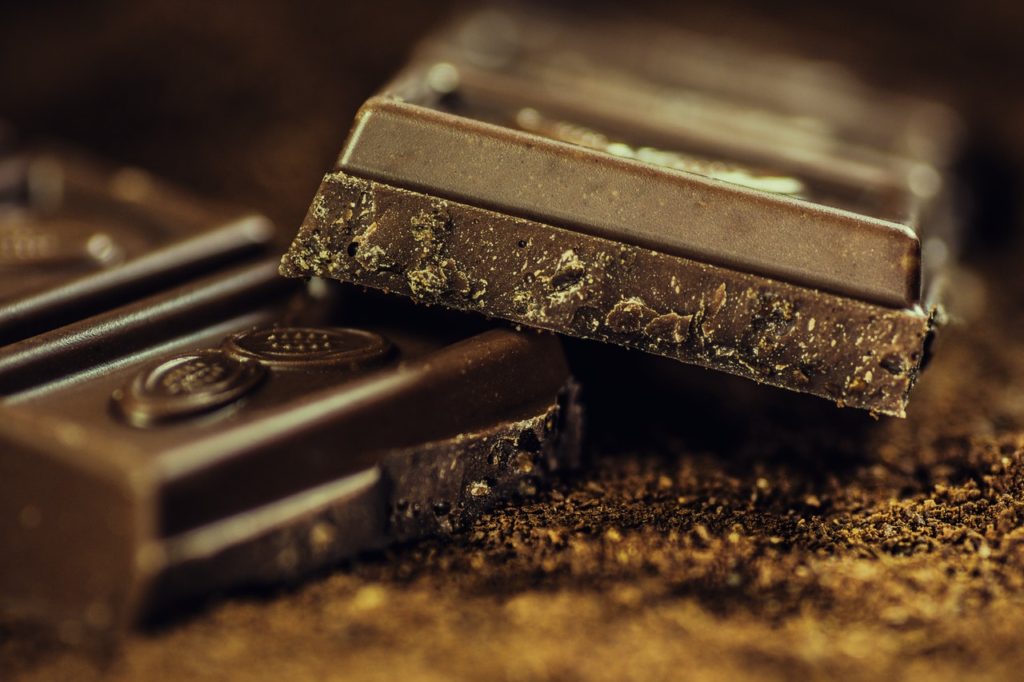
Have you ever had a bite of chocolate and thought it tasted just a little ‘off’, and you say to yourself – “oh, maybe I just don’t like this brand or flavor”? Trust your taste buds- they might be on to something. Because of how chocolate is made and how cocoa is stored~ mycotoxins, yeasts, and fungus in your chocolate are more common than many think. Some of these toxins are tasteless and invisible. There are a few brands that have been tested and tried by health experts like Dave Asprey and Goop.com which you’ll find in the links below.
Generally speaking, those in the early stages of CIRS healing really should carefully avoid chocolate (and follow a low amylose/ mold free diet) while undergoing treatment for biotoxin illness.
Did you know that three quarters of the population can eat ‘moldy’ chocolate and their body naturally filters the toxins? What about the rest of us? For those who are genetically predisposed to conditions like CIRS and other biotoxin illnesses or mold allergies, does this mean we can never enjoy velvety chocolate again?
Thankfully there are a few options and hopefully more to be discovered. If you are in the early stages of recovery and you want to do everything possible to heal as soon as possible, it is
best to avoid or limit your chocolate intake to only small amounts of chocolate that has been tested for toxins.
Here are a few tips when choosing mold free chocolate and reducing intake of mycotoxins:
- Select chocolate from France and Switzerland. The mold standards in Europe are typically more stringent than in the United States regarding toxins.
- Purchase chocolate that is likely to have been stored properly; avoid displays that are in the sun or dusty if buying from a supermarket. Choose stores that have a high turnover. Convenience store chocolate is not a good idea.
- Look at the label- the ingredients should be few and easy to understand. They should not include inflammatory oils like palm kernel or anything hydrogenated.
- Though chocolate connoisseurs will disagree (chocolate odes taste best at room temperature but we’re not taking chances during recovery)– store your chocolate in the refrigerator or freezer as mold/mycotoxins can and will grow if you leave it on the counter.
- Remember the higher the cocoa content- the lower the sugar. Sugar is inflammatory and feeds bacteria associated with SIBO. Many suffering from biotoxin illness also suffer from linked SIBO. Avoid sugar. 80% or higher cocoa content is recommended.
- Test your chocolate for mycotoxins: try one of the brands below on an empty stomach- and pay close attention afterward. If you experience any of the symptoms common to biotoxin illness (aches, digestive issues, headaches, brain fog, fatigue, nausea, breathing or skin issues, etc.) – then DO NOT eat the rest of the chocolate.
- But don’t feel defeated yet- try another brand or another batch after a few days or longer. Mold is tricky; it may be in one batch but not another. Try a fresher source for the chocolate next time.
- Avoid added items like dried fruit & nuts as they may contain mycotoxins.
- And of course- watch the serving size; aim for less in one sitting. You can enjoy a little after lunch and after dinner if you reduce the quantity 😉
mold free chocolate bars
HU Simple This particular flavor is not always in stock, so avoid wandering the aisles at the grocery store, and pick up a few bars through the manufacturer link on Amazon here. Did we mention it is also gluten free, does not contain cane sugar or pesticides? Well, it’s true. Go ahead, buy a little and pop it in the fridge for a tasty treat!
This rare, strong, and rich variety by Lindt is a dark chocolate lovers dream come true- especially if you are scouring the internet trying to find a potentially mycotoxin free chocolate. Even a small piece will satisfy! Buy directly from the Lindt store on Amazon here and skip waiting in the checkout line. It’s super affordable too. Dave Asprey has a post about it too.
For a less intense chocolate, Lindt makes a 90% % cocoa Excellence bar (also available directly from Lindt on Amazon here). Smooth, rich, and balanced. Warm a few squares of this and drizzle over fresh strawberries for a mold & mycotoxin free dessert that everyone can enjoy! Non dairy & gluten free too. The four pack of bars is a fantastic deal!!
A few other quality chocolate products worthy of trying are:
We will continue to research mold free chocolate and update this post as more products become available. In the meantime, feel free to explore how following a mold free meal plan can help you and your loved ones in the posts listed below.
- Free exclusive recipes
- Helpful product giveaways
- Latest news before it reaches the blog
- Supportive tips from the moldfreemenu community
Other posts you might be interested in:
Two most important First Steps in healing from mold illness
Definitions and important phrases related to CIRS
35 safe foods for CIRS and five to avoid completely
What is a Low Amylose diet and why follow it?
The best air purifiers for mold filtration
Share your low amylose reader recipes here!
According to Dr Shoemaker, the low amylose diet is a priority. Taking additional action like removing common inflammatory foods is entirely your decision to make. Some recipes may have ingredients that you don’t like or your body reacts to in some way. We recommend you avoid any food you negatively react to and substitute a different no-amylose food that does not create discomfort. Some common triggers to keep in mind are: nuts & seeds, dairy, and nightshades. Occasional consumption of some potentially inflammatory whole foods like healthy nuts & seeds, small amounts of egg, fresh vegetables & fruits that are considered nightshades might be tolerated by some people. Use caution and observe reactions to these foods carefully when challenging them after your elimination diet.
Always use fresh ingredients while healing from CIRS. NO dried, cured, canned, jarred, or pre packaged foods are recommended because of the potential for mycotoxins and unaccepted additives.
CIRS approved, moldfreemenu recipes will be low or free of amylose, and slant to AIP (Autoimmune Protocol Diet), Dairy Free/Gluten Free/Whole30/Low-carb, Paleo. The recipes will also not contain fungus, mold, or sugar. If any ingredient is unfavorable for you, omit it and potentially substitute something from the Mold Free Menu list of CIRS approved foods that is similar.
*NOTE: eggs are often not tolerated to some degree; causing an inflammatory response. Pay very close attention when reintroducing eggs on your elimination diet; most will need to eliminate eggs for the early stages of healing.
*NOTE: for those with pain, aching and myalgia, nightshades should be avoided.
*NOTE: nuts and seeds contain amylose, and might contain mycotoxins. Eat in moderation or avoid. If nuts and/or seeds are listed on moldfreemenu, they have been selected based on research that they are less likely to contain mycotoxins. ALWAYS store in a cool, dark, dry place.
*NOTE: Take considerable caution selecting fish & seafood, as many are likely to contain varying amounts of toxins & bacteria. Avoid especially in the early stages of healing or eat in moderation to minimize toxins. More info
A low amylose diet is beneficial for CIRS recovery according to Dr. Shoemaker. Elevated MMP9 levels can often be reduced by following a strict low or no amylose diet. Ask your health professional to monitor your bloodwork details.
Share this (Facebook, Pinterest, Instagram)
“All you need is love. But a little chocolate now and then doesn’t hurt.”
― Charles M. Schulz
The information we provide at Moldfreemenu.com is intended to provide information to better understand how a healthy diet is part of healing from biotoxin illness and not intended to replace consultation with a qualified medical professional.Specific medical advice including diagnosis and treatment will not be provided. This diet does not cure mold illness but does help reduce inflammation- thus reduce symptoms triggered by inflammation.
To read research done by https://www.ncbi.nlm.nih.gov/pubmed/26528824- the National Center for Biotechnology Information
The sad news about black pepper… https://www.sciencedirect.com/science/article/abs/pii/S0956713510001271 …. “frequently affected by Aspergillus spp. include chili peppers, black pepper, coriander, turmeric and ginger.” https://www.who.int/news-room/fact-sheets/detail/mycotoxins https://www.sciencedirect.com/science/article/pii/S2211601X16000663

